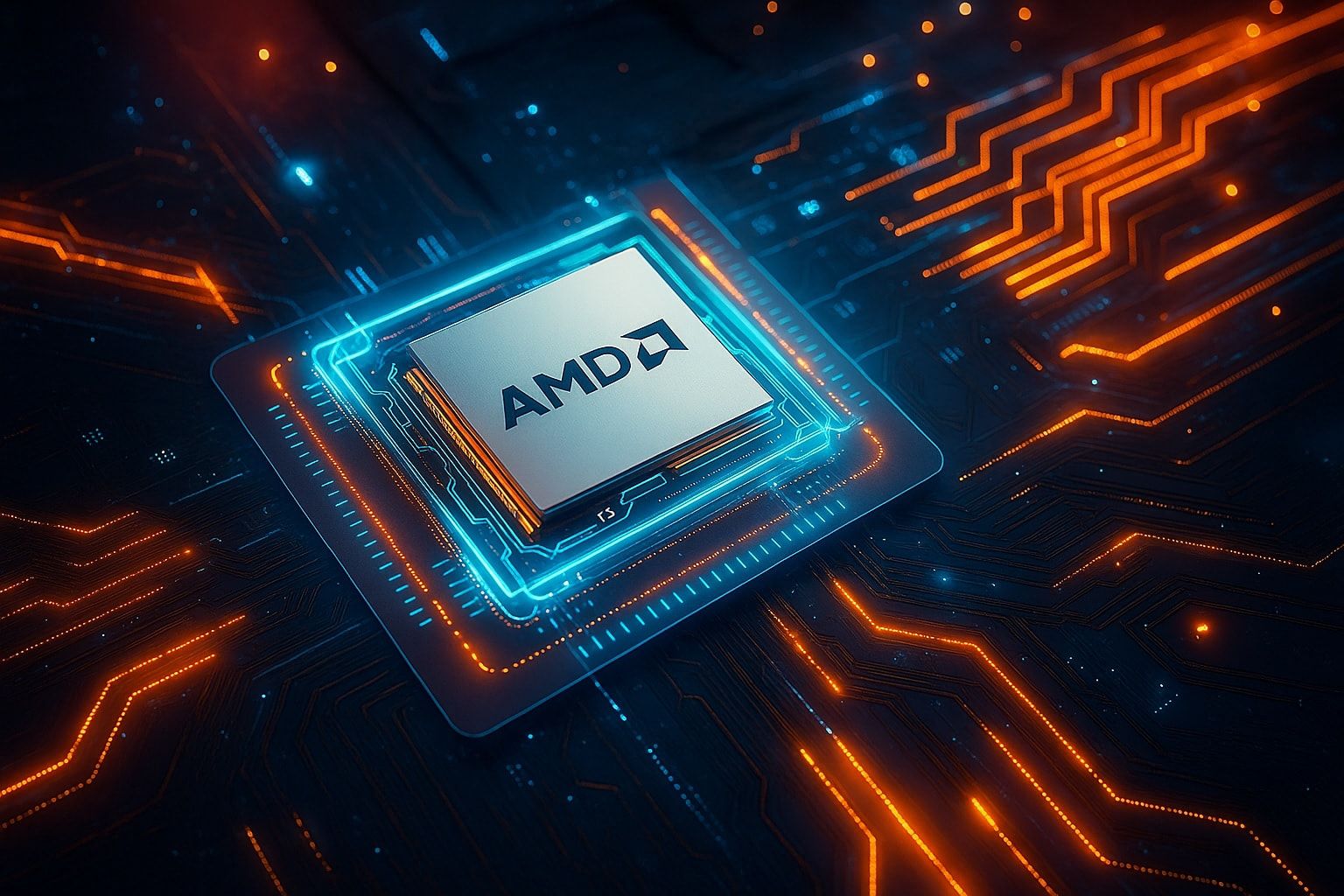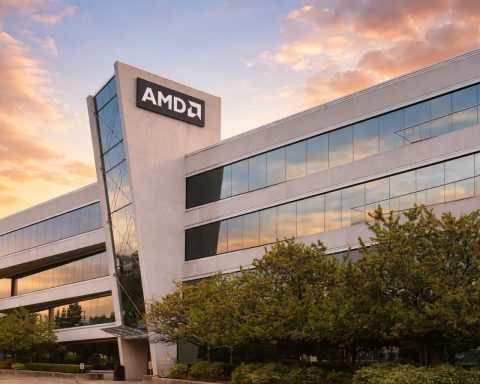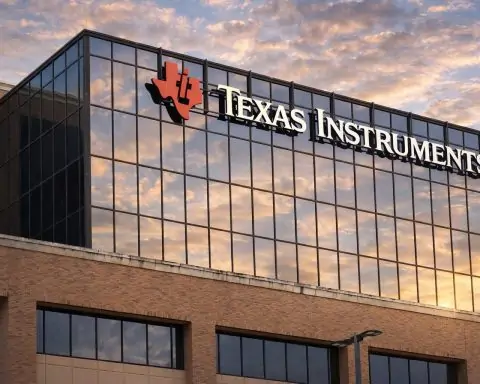Advanced Micro Devices, Inc. (NASDAQ: AMD) headlines today with fresh confirmation that its next big data‑center leap—2nm “Epyc Venice” CPUs and Instinct MI400 accelerators—is slated for 2026, while investors count down to AMD’s Financial Analyst Day on Tuesday, November 11. The stock softened intraday as markets digested this week’s record Q3 print and looked for the next catalyst (see live chart above). [1]
Key takeaways (Nov. 7, 2025)
- Roadmap clarity today: AMD reiterated that 2nm Epyc “Venice” and Instinct MI400 will arrive in 2026, framing the next phase of its data‑center AI push. [2]
- Analyst Day in four days: The company will outline multi‑year product and financial roadmaps on Nov. 11 in New York (webcast available), a likely near‑term stock driver. [3]
- Street chatter today: Fresh previews flag AI roadmap details as the focus for next week; one note shows a minor EPS‑estimate trim while maintaining a bullish rating. [4]
- Competitive watch: Industry coverage highlights that a potential Intel–NVIDIA collaboration could intensify competition; AMD flagged competitive dynamics in filings, reports say. [5]
What’s new today
Venice & MI400 timing lands (again) on 2026. In coverage published this morning, AMD’s Lisa Su is cited reaffirming that 2nm Epyc “Venice” CPUs and Instinct MI400 accelerators ship in 2026—the pair that will underpin AMD’s next large step in AI and high‑performance computing. Today’s notes line up with statements made on this week’s earnings call. [6]
Analyst day spotlight grows. Previews circulating today emphasize Nov. 11 as the moment AMD will update long‑term strategy and product roadmaps. Expect investors to hone in on the data‑center AI trajectory (Instinct MI3xx → MI4xx), software progress (ROCm), and any color on server CPU cadence. AMD’s IR calendar shows the event starts 1:00 p.m. ET with a webcast. [7]
Street fine‑tuning. A new blurb shows Cantor Fitzgerald trimming its FY2025 EPS estimate slightly while keeping an Overweight rating—illustrating a broader theme: most analysts remain constructive but want more granularity on the 2026 AI ramp. [8]
Competitive overhang in headlines. TrendForce today reprises reporting that an Intel–NVIDIA partnership could raise competitive pressure for AMD across PC and data center; the report references AMD risk disclosures and third‑party coverage. It’s a narrative to watch, especially as AMD pitches full rack‑scale systems. [9]
This week in context: AMD beat, raised—and set up 2026
On Tuesday (Nov. 4) AMD posted record Q3 revenue of $9.2B (+36% YoY) with non‑GAAP EPS of $1.20 and data‑center revenue of $4.3B, then guided Q4 above consensus. Management also said the AI business is “entering its next phase of growth,” while reiterating Venice (2nm) and MI400 are on track for 2026. The stock cooled as investors looked past the near‑term raise to the magnitude/timing of next year’s AI inflection. [10]
What the 2026 platform actually looks like
Beyond timing, AMD has started sketching tangible platform details:
- Helios rack‑scale AI systems. AMD’s new Helios design packages Epyc CPUs, Instinct GPUs, and networking into an open rack aligned with Meta’s Open Rack Wide standard—targeted squarely at large‑scale AI training/inference. [11]
- Memory & bandwidth at rack scale. In October, AMD described Helios with 72 next‑gen Instinct GPUs delivering 31TB of HBM4 and 1.4 PB/s aggregate bandwidth, signaling a capacity‑first strategy for frontier models. (These Helios performance/memory figures are AMD’s own.) [12]
- Hyperscaler interest and customers. Coverage this week also notes growing traction with hyperscalers ahead of MI400/Helios availability. [13]
Competitive landscape & risks
- Intel–NVIDIA tie‑up reporting. If realized, a joint PC/data‑center chip effort by Intel and NVIDIA would be a fresh axis of competition; industry write‑ups today say AMD flagged the potential risk in filings. We’ll be watching to see if AMD addresses this head‑on at Analyst Day. [14]
- Legal watch. On Nov. 3, Adeia sued AMD, alleging infringement of patents tied to manufacturing methods (including those used in 3D V‑Cache devices). AMD hasn’t publicly commented; any legal overhang bears monitoring but is too early to handicap. [15]
What to watch on Nov. 11
- Granular AI targets. Any multi‑year revenue/ship targets for DC GPU (MI350 → MI400) and Helios wins.
- CPU cadence. Firmed timelines/features for Zen 6 “Venice” and clues on platform counts/core density.
- Ecosystem & software. ROCm progress, frameworks, and inference optimizations at scale.
- Capital needs & supply. Packaging, HBM, and system integration capacity into 2026.
(AMD’s event info and webcast details are on its IR site.) [16]
Bottom line
AMD enters Analyst Day with record results in hand, 2026 catalysts locked in, and a credible rack‑scale AI story. The next leg likely hinges on how convincingly AMD translates that roadmap into near‑term deployments and MI4xx/Helios bookings—and how it answers intensifying competition from both NVIDIA and a resurgent Intel.
This article is for information only and not investment advice.
Sources & further reading
- AMD Q3 FY2025 results and guidance. Official press release and coverage. [17]
- Venice & MI400 timing (today). TechSpot report; corroborating industry coverage. [18]
- Helios details (AMD). Newsroom and engineering blog with HBM4/throughput figures. [19]
- Analyst Day timing. AMD IR calendar/event page. [20]
- Street coverage today. TipRanks preview; Cantor estimate tweak. [21]
- Competition & legal. TrendForce note on Intel–NVIDIA reports; Reuters on Adeia lawsuit. [22]
References
1. www.techspot.com, 2. www.techspot.com, 3. ir.amd.com, 4. www.tipranks.com, 5. www.trendforce.com, 6. www.techspot.com, 7. ir.amd.com, 8. www.marketbeat.com, 9. www.trendforce.com, 10. ir.amd.com, 11. www.amd.com, 12. www.amd.com, 13. www.theregister.com, 14. www.trendforce.com, 15. www.reuters.com, 16. ir.amd.com, 17. ir.amd.com, 18. www.techspot.com, 19. www.amd.com, 20. ir.amd.com, 21. www.tipranks.com, 22. www.trendforce.com










